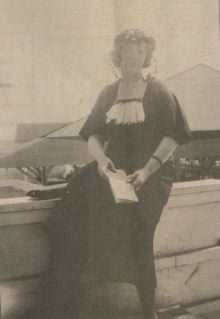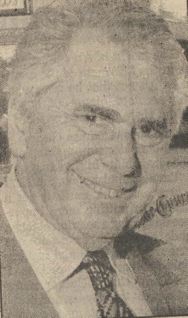Attorney Marvin Lewis (ML): A couple of weeks after that I heard from McCracken.
Michael McCracken (MM): Next Sunday, your painting will be ready. Come and get it.
ML: How do I find you?
MM: Just go to a grocery store in Princeton and they’ll tell you how to get here.
Marvin Lewis (to June): That was a Sunday and I had my Chrysler. I remember, I had just bought it. It was pouring, just a real storm.
Mrs. Lewis to her husband: You’re nuts to go.
ML to his wife: “I can’t reach these people by phone. They’re expecting me. He painted this painting, whatever it is. So I better pick it up.
ML (to June): I drove from Hillsborough over the Half Moon Bay Road, came down to Princeton, went to the grocery store and asked for Carol and McCracken.
Storeowner: Oh, you mean where the beatniks live? He walked outside the store and pointed. You see that promintory that comes out into the water? Pillar Point. That way? Right out on the end is a building, you’ll see its wrecked and they’re living in that wrecked building.
ML (to June) I drove and followed the coastline and went out there. Just as I arrived these great big dogs came running at me. One had red hair and was barking and two guys ran out, including Michael, calling off the dogs.
Marvin Lewis (to June): As I approached the house, I heard loud music playing and chickens were flying all over the place, roosters and goats walking around. There was even a goat inside the “house”. Then when I came inside this large room there were couples copulating all over the floor. I had to step over them.
In the middle of the floor there was a fire going in a brick kiln which they had built for Carol’s baby. Carol married McCracken. He made it legal. There was some guy laying on his back–I think with some gal in his arms and with his bare feet he was rocking the cradle while the baby was crying over the noise of the music and all of the scenes of animals and birds that were flying about in the building.
Michael McCracken (MM): Would you like to see the painting?
ML (to June) I went to see this painting and it was a sexual painting. The two wings were sexual, genital organs. It was a white angel and the rest of the picture was just black, inky black. It wasn’t a picture. It was a mural. It took up the whole wall.
ML to MM: I’m most grateful. I know the work you put into this but I don’t know how to say this–but I just don’t have any office space.
MM: What about your home?
ML: No way. Mostly my house is glass. I don’t have any wall space for paintings. I couldn’t get it in.
MM: I’m terribly disappointed–if you knew the hours I put in on this painting. Would you accept a smaller dark angel?
ML: Yes.
ML (to June) He went and got me a duplicate that was smaller and framed. I got into the car and dogs were barking at me until I drove away. I said goodbye to them and left. That was the last time I ever saw them. I don’t know what happened to the Dark Angle. My wife saw it and she let out a howl.
Mrs. Lewis to Mr. Lewis: My God, what are yoiu going to do with that?
ML (to June) We put it in the basement. Maybe it’s still there. I can’t remember if I gave it to my son or not–but it was something I was sure could have no value. I thought it had absolutely no appeal but I didn’t understand modern painting and I still don’t.




